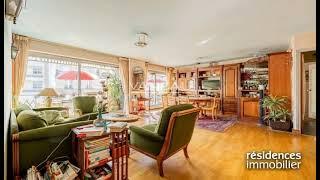Gunnar Asplund was a pivotal figure who navigated the transition from Nordic Classicism to Modernism with a deeply personal, humanistic vision. His work synthesized opposing ideas: the monumental and the intimate, the historical and the contemporary, the rational and the intuitive. He was not a dogmatic ideologue, but an orchestrator of light and form, dedicated to the human experience.
If asked, "What is architecture?", Asplund would argue it's fundamentally a humane art that creates an emotional experience. It’s not about style or abstract ideals, but a building’s capacity to move the human spirit. He saw it as a narrative art, a choreographed sequence of spaces, light, and materials that tells a story and guides a user on a journey. He'd define it as the art of creating a human experience, a synthesis of light, material, and proportion that evokes a specific emotion and serves as a living dialogue with tradition and nature.
His architectural journey began with Nordic Classicism, a style using simple geometric volumes and symmetrical plans infused with a local sensibility. He applied timeless principles of proportion with restraint and elegance. This classical foundation was not abandoned, but became the wellspring for his modernism. He engaged with functionalist principles of efficiency, but never sacrificed the emotional richness of his earlier work. He created a humane modernism, proving a concrete structure could feel warm and tactile.
Asplund’s primary medium was light. He was a master of its manipulation, using it to sculpt space and create atmosphere. He employed skylights and hidden light sources to create a sense of mystery or revelation, guiding the visitor from darkness to light. His sensitivity to materials was equally profound. He combined disparate materials like cool polished stone and rough timber, believing a building’s surfaces should engage the senses. He used materials truthfully, revealing their natural texture and grain to create a sense of authenticity and warmth.
His designs are a choreographed journey. He meticulously planned the procession from the public to the private realm, using changes in scale, light, and material to shape the emotional response. The exterior might be a grand volume, but the interior was a different world entirely—a space with human-scaled furniture and a sense of inviting comfort. This duality is central to his philosophy: a building should serve its public purpose with dignity but also provide a sanctuary for the individual.
Asplund's influence is pervasive among architects seeking a more humane modernism. He showed a building could be both modern and rooted in tradition, both rational and emotionally powerful. His legacy lies in the work of those who prioritize the expressive power of light, the tactile quality of materials, and the art of crafting a spatial narrative. He proved architecture isn't a formula, but a conversation with history, nature, and the human spirit.
==============================================================================
#Architecture, #ArchitecturalDesign, #Building Design, #ArchitectureInspiration, #ArchitecturalStyles, #ModernArchitecture, #HistoricArchitecture, #ArchitecturalPhotography, #UrbanDesign, #InteriorDesign, #SustainableArchitecture, #StructuralDesignm #ArchitecturalHistory, #ArchitecturalInnovation, #ArchitecturalVsualization, #HomeDesign, #ArchitecturalTheory, #ArchitecturalDrawings, #BuildingMaterials, #ArchitectureDocumenta,ries, #Architectural landmarks, #ArchitecturalInnovation, #ArchitecturalVisualization, #ArchitectureLovers, #Construction, #Cityscapes, #Skyscrapers, #alexandersszewczuk.blogspot.com,
If asked, "What is architecture?", Asplund would argue it's fundamentally a humane art that creates an emotional experience. It’s not about style or abstract ideals, but a building’s capacity to move the human spirit. He saw it as a narrative art, a choreographed sequence of spaces, light, and materials that tells a story and guides a user on a journey. He'd define it as the art of creating a human experience, a synthesis of light, material, and proportion that evokes a specific emotion and serves as a living dialogue with tradition and nature.
His architectural journey began with Nordic Classicism, a style using simple geometric volumes and symmetrical plans infused with a local sensibility. He applied timeless principles of proportion with restraint and elegance. This classical foundation was not abandoned, but became the wellspring for his modernism. He engaged with functionalist principles of efficiency, but never sacrificed the emotional richness of his earlier work. He created a humane modernism, proving a concrete structure could feel warm and tactile.
Asplund’s primary medium was light. He was a master of its manipulation, using it to sculpt space and create atmosphere. He employed skylights and hidden light sources to create a sense of mystery or revelation, guiding the visitor from darkness to light. His sensitivity to materials was equally profound. He combined disparate materials like cool polished stone and rough timber, believing a building’s surfaces should engage the senses. He used materials truthfully, revealing their natural texture and grain to create a sense of authenticity and warmth.
His designs are a choreographed journey. He meticulously planned the procession from the public to the private realm, using changes in scale, light, and material to shape the emotional response. The exterior might be a grand volume, but the interior was a different world entirely—a space with human-scaled furniture and a sense of inviting comfort. This duality is central to his philosophy: a building should serve its public purpose with dignity but also provide a sanctuary for the individual.
Asplund's influence is pervasive among architects seeking a more humane modernism. He showed a building could be both modern and rooted in tradition, both rational and emotionally powerful. His legacy lies in the work of those who prioritize the expressive power of light, the tactile quality of materials, and the art of crafting a spatial narrative. He proved architecture isn't a formula, but a conversation with history, nature, and the human spirit.
==============================================================================
#Architecture, #ArchitecturalDesign, #Building Design, #ArchitectureInspiration, #ArchitecturalStyles, #ModernArchitecture, #HistoricArchitecture, #ArchitecturalPhotography, #UrbanDesign, #InteriorDesign, #SustainableArchitecture, #StructuralDesignm #ArchitecturalHistory, #ArchitecturalInnovation, #ArchitecturalVsualization, #HomeDesign, #ArchitecturalTheory, #ArchitecturalDrawings, #BuildingMaterials, #ArchitectureDocumenta,ries, #Architectural landmarks, #ArchitecturalInnovation, #ArchitecturalVisualization, #ArchitectureLovers, #Construction, #Cityscapes, #Skyscrapers, #alexandersszewczuk.blogspot.com,
- Catégories
- Architecte Architecte Intérieur - Décorateur
- Mots-clés
- Architecture, Architectural design, Building design


















Commentaires